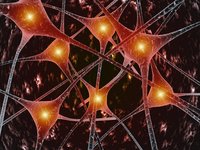
Neuroinformaticists of Centrum Wiskunde & Informatica (CWI) in Amsterdam managed to simulate complex brain activity on simple video cards. The simulated brain contains 50,000 neurons communicating with 35 million signals per second. This is comparable to the brain capacity of insects such as ants or flies. Researchers Leszek Slazynski and Sander Bohte are publishing their results in this month’s Network: Computation in Neural Systems. The simulation methods bring the ultimate goal of simulating the 100 billion neurons of the human brain closer.
According to the researchers, using video cards (GPUs) can speed up brain simulations (spiking neural networks) by a factor ten. Bohte: “Brains do not have a central processing unit like computers. The spikes of all neurons together perform the computation. GPUs are designed to perform millions of small computations per second in parallel, and are therefore very well suited to simulate brain activity. Also, our simulations can be performed on a modified desktop computer, so researchers do not need to have access to a supercomputer.”
One of the fundamental questions in neuroinformatics is how the joint action of neurons generates intelligent behaviour. To answer this question, neuroinformaticists develop faster and more efficient methods to simulate biological neural networks, so that ultimately the 100 billion neurons of the human brain can be simulated. Besides understanding intelligence, neural networks are also useful for tasks that are hard for regular computers, such as image recognition and social behaviour.
Neuroinformatics is part of CWI’s Life Sciences research. This research uses fundamental theories and tools from mathematics and informatics to make the life sciences more exact and quantitative.
More information:
A draft of the paper
More information on this research
